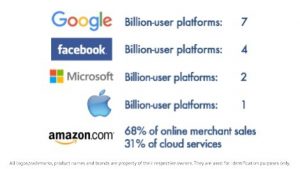
Tumisu / Pixabay
Employee retention and engagement is critical for the success of any company. A 2019 Gallup report found that the cost of replacing an individual employee can range from 1.5 – 2 times the employee’s annual salary. If your business has high employee turnover, you’re expending unnecessary money, time, and resources.
Employee turnover isn’t only expensive; it also can lead to low morale, a lack of productivity, and poor or disjointed customer service. The downside to recurring employee turnover is significant and the stakes have risen even more during the pandemic.
Even for those companies lucky enough to withstand the challenges of the pandemic, many businesses now face new questions related to employee recruitment and retention. How do you build a team post-pandemic, motivate them to excel, and keep them engaged? This article is the third in a four-part series that is examining the evolution of building a team to thrive in today’s marketplace, including hiring, onboarding, maintaining the team, and ongoing team building. Check out the first article that covers hiring tips and the second piece that explores onboarding.
A great deal of uncertainty exists around employee retention and business leaders must adjust to meet the moment. Despite these challenges, businesses have new opportunities to identify and build exceptional teams that will power a company’s growth. When it comes to maintaining a consistent team, the best strategies are as much art as science.
Science of Employee Retention
The science side of retention starts with the numbers and the one number that matters most to employees: their salaries. As a business owner or leader, you don’t always need to offer the highest salaries, but your compensation must be competitive. It’s absolutely worth the resources and effort to keep current with market salaries for your industry and location. If you want to build and retain a great team, you have to pay people what they deserve.
Consider participating in market salary surveys. The intel will be helpful to gauge how your company fares against others. Plus, the organizations managing those surveys frequently offer complimentary results to participants.
Competitive benefits packages are crucial as well. Business owners and executives can get creative with benefits too, such as reimbursement for a gym membership or continuing education and professional development. If your team cares about giving back, make it easier for them to serve on local nonprofit boards. Give employees flexible schedules, and, if you can afford it, donate to the causes they support. These efforts have a noticeable impact on employee satisfaction.
Another piece of the science of employee retention is asking employees what matters to them. Get their feedback on company decisions. Of course, you have to do what’s best for the entire workplace; however, asking for your team’s input and finding meaningful ways to include them in decision-making demonstrates your commitment to them. Then, team members are more likely to return that level of loyalty.
Art of Employee Retention
There’s an art to effective retention strategies as well. It’s not just about the numbers.
The art side of employee retention focuses on relationship-building. Start with consistent communication, such as weekly team emails or a monthly company update. Share news that will impact your employees proactively. It’s always better to hear any news or changes from a company leader or manager.
Find ways to celebrate your team and their accomplishments. Shout-outs for good work and other forms of recognition build trust and loyalty. Don’t forget about birthdays and work anniversaries. Depending on the size of your business, this recognition could happen ad hoc or on a recurring basis (such as monthly or quarterly). The important takeaway is to develop and commit to a recognition program. Even the little things matter.
Another aspect of the art of employee retention is having fun. We all spend a significant portion of our lives working and we’re much happier when we like our co-workers. How do you build that camaraderie? Plan periodic happy hours or service days. I’ve found that some of our best work memories have come from spontaneous ice cream days.
In my experience, company retreats are powerful retention tools. Successful company retreats can bring employees closer together and reinvigorate a team. Getting creative is increasingly vital and consider how to use a retreat to tap into your team’s artistic side. We’ve had great success with improv and painting classes during our company retreats.
It all comes down to relationships. An informal tactic that all managers should rely on is management by walking around. Get up from your desk and walk around the office. Check in with your team. Nothing planned, structured, or forced. Don’t go around with an agenda. Just stop by, say hi, and ask how they’re doing. This approach has been more challenging during the pandemic. If you’re not back in an office setting, pick up the phone and give you team members a quick call.
Finally, everyone loves gifts. Surprise employees with gift cards or periodic company swag. The gifts don’t have to be large – think coffee mugs, shirts, and baseball caps – but they send a clear message that everyone is on a team together. By consistently reinforcing that team dynamic, you’ll build employee loyalty and increase retention.
Business & Finance Articles on Business 2 Community
(54)
Report Post







